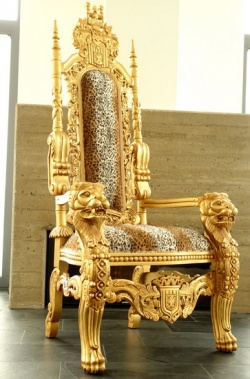Lion Throne
lion throne Long before his time (6th-century BCE) the lion had already assumed its association with royalty in general, and especially the role of vehicle [Skt. vahana] -- a "familiar" or animal associated with divinity. Whenever Buddha is shown seated there are eight lions -- one at each corner of the base or dais -- supporting his lotus throne.
The warlike king, Ashoka, converted to Buddhism, and converted his north Indian kingdom into a peaceful domain. He had pillars set up all through his territory proclaiming the rule of peace. Fa-hsien, the Chinese pilgrim who toured India in 400 CE, wrote that at Sarnath where King Ashoka had erected one of his edict pillars, there was living a group of monks. When a member of an opposing sect questioned their right to live there, the lion sitting atop the post gave a loud roar which frightened him away.
"What do you do when the stone lion roars?" is a Zen Buddhist koan.
The Lion Throne is the English term used to identify the throne of the Dalai Lama of Tibet. It specifically refers to the throne historically used by Dalai Lamas at Potala Palace in Lhasa.
